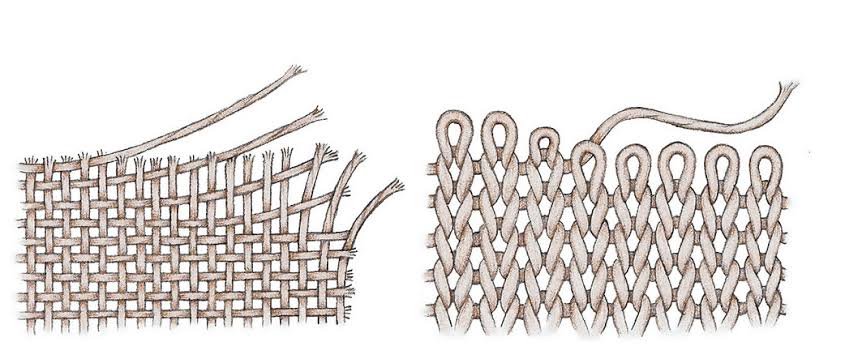
Knitted vs Woven Fabrics
Share
The way yarns are put together determines how a fabric looks, feels, stretches, and performs. The two most common construction methods are knitting and weaving. Understanding their differences helps in choosing the right fabric for comfort, durability, and the intended purpose of a garment.
1. Knitted Fabrics
- Construction: Made by interlooping yarns in a continuous series of connected loops.
-
Characteristics:
- Stretch & Flexibility: Naturally stretchy (especially weft-knits), allowing garments to move with the body.
- Softness: Smooth, comfortable, and gentle on the skin.
- Drapability: Falls and flows easily, giving a relaxed, casual look.
-
Breathability: Looser structure allows good airflow, keeping the wearer cool.
-
Performance:
- Great for activities requiring movement and flexibility.
-
Provides comfort for daily, all-day wear.
-
Common Uses:
-
T-shirts, sweatshirts, leggings, loungewear, sportswear, and undergarments.
-
Limitations:
- May lose shape over time if not blended with stretch fibers (like elastane).
-
More prone to snagging and pilling compared to wovens.
2. Woven Fabrics
- Construction: Made by interlacing two sets of yarns (warp and weft) at right angles.
-
Characteristics:
- Strength & Structure: Tighter construction makes them durable and resistant to wear.
- Low Stretch: Generally stable with little natural stretch (unless blended with elastane or woven in special patterns).
- Shape Retention: Holds form well, making garments look crisp and polished.
-
Variety of Weaves: Includes plain, twill (like denim), and satin, each offering unique textures and aesthetics.
-
Performance:
- Long-lasting and dependable for garments that need durability and structure.
-
Provides warmth when made with denser weaves.
-
Common Uses:
-
Shirts, trousers, blazers, jackets, denim jeans, formalwear, and upholstery.
-
Shirts, trousers, blazers, jackets, denim jeans, formalwear, and upholstery.
-
Limitations:
-
Less flexible and breathable compared to knits.
-
Less flexible and breathable compared to knits.
Why Fabric Construction Matters
- Comfort → Knits for softness and stretch; wovens for structure.
- Fit → Knits adapt to the body; wovens hold a defined shape.
- Longevity → Wovens often last longer due to strength, while knits prioritize comfort and flexibility.
✅ In summary:
- Knits = Stretchy, soft, and casual → Perfect for comfort & movement.
- Wovens = Strong, structured, and durable → Perfect for formality & longevity.
